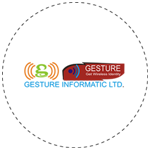Step #5: Decide on Frequency
How frequently you send emails depends on the goals you are trying to achieve, as well as your target audience. Sending emails too often raises the risk of being considered spam, while sending emails not often enough may mean a loss of business leads to competitors. Striking the right balance between the two should be your plan of action in deciding your mail-out frequency. You can also use different frequencies for different segments of your readers, based on the opening rates of each group. Here are some options:
▪ Quarterly emails: If you do not have much information, send your emails quarterly.
▪ Monthly/Weekly Newsletters: If you have a newsletter, send it monthly or weekly depending on how well your readers respond to it.
▪ Bi-monthly Emails: Send emails twice a month to strike a balance between monthly and weekly emails.
▪ Weekly Emails: If you are an e-commerce business, you could send weekly updates on your products. The same goes for professional service websites if there is useful content ready to be sent each week.
▪ Promotional vs Editorial: Reduce the frequency of promotional emails and increase the frequency of emails that give information, for example, tips, blogs or trends.
▪ Discounts and Offers: Determining the frequency of emails that offer promotional discounts and special offers is tricky and it largely depends on your audience. Some may like to receive timely discount updates via email while some may not. Measure the opening rates of your email and change the sending frequency accordingly.
▪ Active Engagement: Increase email frequency for those who are actively engaging with your emails.
▪ Inactive Customers: Reduce frequency for customers who are inactive. At a later stage, offer to re-activate their subscription by offering discounts on your service or products.
▪ Ask your Customers: Hear from your customers how often they would like to receive your newsletters, through a subscriber form or a survey.
Increase Email Open Rates
SAMPLE NEWSLETTER ,
▪ Increasing conversions and click-through rates depends a whole lot on the open rate of your emails. Click-throughs bring about conversions, and this will happen only when the open rates of your emails are high. For instance, if your average email open rate is 80 percent, the click-throughs might be 40 percent and conversions might be 25 percent.
▪ Your email marketing efforts are wasted if your email open rate is poor. |
|
Step #1: Be a Recognized Sender
Open rates are noticeably increased when senders are known. Unsolicited emails have poor open rates.
▪ Subscribers only: If you offer an email newsletter on your website you must make sure you only send it to those who opt-in for it on your website. A great tool to invite visitors to subscribe is ManyContacts, a contact form that takes 2mins to install.
▪ Permission-based: If you offer product/service information, make sure you have your customers' permission to send them emails.
▪ Prompt: The sooner you send a promised email to your customers, for instance after a phone call or one-on-one meeting, the higher the open rate of your emails. This is because you are a recognized and expected sender. |
|
Step #2: Create Subject Lines that Grab Attention
People open emails based on a recognized sender and a catchy subject line.
The following are some tips on creating subject lines that improve email open rates:
Create Urgency: Using a subject line with a time-sensitive topic can produce higher open rates. Here are some examples of urgent email subject lines: One registration spot left, Last minute free shipping for Christmas, 50% discount ends tonight at midnight, etc. These create a sense of urgency and may encourage your readers to click-through the call-to-action button in your email.
Create Temptation: If the email is about a blog or article, use subject lines that create temptation, such as, Avoid these 5 mistakes at all costs, 5 Danger signs to watch out for, 3 easy ways to invest money, and so on.
Provide a Location: If you are a local business, you can add your location in the subject line to entice readers to open your email.
Word Count: Keep subject lines concise. An appropriate length is 50 characters or less, though it could be longer for targeted receivers.
Incomplete Subject Lines: Incomplete subject lines create curiosity, as do questions. For example, The real reason people gain weight is?, and, Today’s special discount on [product name].
A/B Test Subject Lines: No matter how smart you think your subject lines are, A/B testing them is a must. Most email marketing software providers have A/B testing so that you can test which subject lines result in higher open rates.
Avoid Looking Like Spam:
▪ Do not use words such as Free, Help, Percent Off, Reminder.
▪ Do not repeat your subject line.
▪ Do not use punctuation signs more than once, for example !!!, $$$.
▪ Do not use ALL CAPITALS. |
|
Step #3: Timing Your Emails.
A strategic time to send your emails can be based on the customer research you did when planning your email marketing strategy, as discussed in our previous email.
For subscribed users (targeted customers), good timing depends on:
▪ The customer’s need for the information in the email. For example, if the customer subscribed to your email newsletter when buying an electric oven, you could send them information about related products, such cookie cutters or bakeware.
▪ Depending on the demographics of your customers, send emails when they are available to check their inboxes at work, at school, on the move or at home.
The ideal mail-out times to improve open rates are as follows:
▪ The highest email open rates are achieved between 8am and 9am and between 3pm and 4pm.
▪ The second highest rates are achieved between 6pm and midnight
▪ Most messages land in the inbox in the morning, which means that emails sent between 12 noon and 6pm tend to have higher open rates than emails sent in the morning, as they will not have as much competition.
▪ Open rates are higher during weekends than weekdays. |
|
Step #4: Avoid Spam Filters
Increased deliverability rates of your emails will enable increased open rates. Thus, you must avoid spam filters:
▪ Do not use colors in the email body or text, particularly red or green.
▪ Do not overly emphasize your call-to-actions, like CLICK HERE, and avoid loud colors, large fonts and capital letters.
▪ Do not use bad HTML coding.
▪ Do not trick your readers by using Re: or Fwd: in the subject line.
▪ Do not use a lot of images.
▪ Do not use bulky attachments in emails. Especially avoid attaching these file types: .exe, .zip and .swf.
▪ Do not send unsolicited emails. |
|




